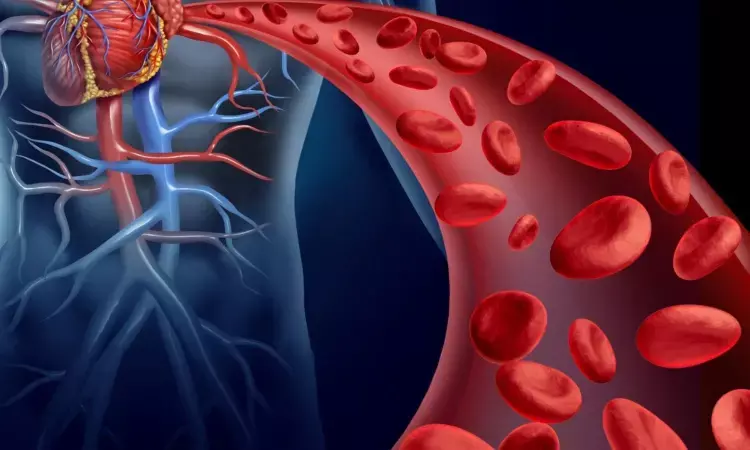- Home
- Medical news & Guidelines
- Anesthesiology
- Cardiology and CTVS
- Critical Care
- Dentistry
- Dermatology
- Diabetes and Endocrinology
- ENT
- Gastroenterology
- Medicine
- Nephrology
- Neurology
- Obstretics-Gynaecology
- Oncology
- Ophthalmology
- Orthopaedics
- Pediatrics-Neonatology
- Psychiatry
- Pulmonology
- Radiology
- Surgery
- Urology
- Laboratory Medicine
- Diet
- Nursing
- Paramedical
- Physiotherapy
- Health news
- Fact Check
- Bone Health Fact Check
- Brain Health Fact Check
- Cancer Related Fact Check
- Child Care Fact Check
- Dental and oral health fact check
- Diabetes and metabolic health fact check
- Diet and Nutrition Fact Check
- Eye and ENT Care Fact Check
- Fitness fact check
- Gut health fact check
- Heart health fact check
- Kidney health fact check
- Medical education fact check
- Men's health fact check
- Respiratory fact check
- Skin and hair care fact check
- Vaccine and Immunization fact check
- Women's health fact check
- AYUSH
- State News
- Andaman and Nicobar Islands
- Andhra Pradesh
- Arunachal Pradesh
- Assam
- Bihar
- Chandigarh
- Chattisgarh
- Dadra and Nagar Haveli
- Daman and Diu
- Delhi
- Goa
- Gujarat
- Haryana
- Himachal Pradesh
- Jammu & Kashmir
- Jharkhand
- Karnataka
- Kerala
- Ladakh
- Lakshadweep
- Madhya Pradesh
- Maharashtra
- Manipur
- Meghalaya
- Mizoram
- Nagaland
- Odisha
- Puducherry
- Punjab
- Rajasthan
- Sikkim
- Tamil Nadu
- Telangana
- Tripura
- Uttar Pradesh
- Uttrakhand
- West Bengal
- Medical Education
- Industry
Iron deficiency anemia and sickle cell disease can falsely increase HbA1c in non-diabetics

Saudi Arabia: A recent study published in BMC Endocrine Disorders showed a significant increase in HbA1c levels in sickle cell disease and iron deficiency anemia in patients not known to have diabetes.
The researchers found no significant effect in patients with megaloblastic anemia and the β-thalassemia trait. Treatment of iron deficiency anemia significantly reduced the HbA1c level, bringing it back to normal.
Worldwide, diabetes is one of the most common diseases with significant mortality and morbidity. For the disease's diagnosis and monitoring, HbA1c remains one of the most critical methods. Since HbA1c reflects glucose attached to red blood cells, factors affecting the half-life of red blood cells (RBCs) and hemoglobin can influence HbA1c measurements.
Basil A Alzahrani from King Saud Bin Abdulaziz University for Health Sciences in Jeddah, Saudi Arabia, and colleagues aimed to assess the effect of different anemia types, including sickle cell anemia, iron deficiency anemia, megaloblastic anemia, and β -thalassemia trait on HbA1c levels in a tertiary hospital over the past six years (2016-2022).
For this purpose, they conducted a retrospective chart review of 324 patients with one of the four anemia types mentioned above and a control group. The control group comprised healthy adults with normal hemoglobin and HbA1c who were unaware of anemia or diabetes. Patients with prediabetes or diabetes based on elevated fasting or self-reporting, random blood sugar, or 2 hours post-prandial blood glucose were excluded.
The study revealed the following findings:
- The mean HbA1c levels were remarkably higher in iron deficiency anemia at 5.75% and in sickle cell anemia at 5.83% compared to the control group at 5.32%.
- In megaloblastic anemia, the mean HbA1c levels were 5.38% and 5.45% in the beta thalassemia trait, which was not significantly different from the control group.
- HbA1c notably decreased from 5.75 to 5.44% after treatment in the iron-deficient group.
- Higher red cell distribution width and lower hemoglobin corresponded with higher HbA1c levels in patients with sickle cell anemia.
To conclude, sickle cell disease and iron deficiency anemia (IDA) can falsely increase HbA1c and anemia correction in IDA patients can lower the level back to baseline.
"Our study found an inverse relation between hemoglobin level and HbA1c level in sickle cell anemia patients, while high red cell distribution width (RDW) corresponded with high HbA1c levels," the researchers wrote. "When depending on HbA1c for diabetes diagnosis in those with sickle cell disease and IDA, clinicians should use caution."
"We recommend anemia correction in IDA patients before HbA1c use for diagnostic purposes. Further studies on a larger scale are required to assess the effect of sickle cell disease and red cell distribution width on HbA1c."
Reference:
Alzahrani, B.A., Salamatullah, H.K., Alsharm, F.S. et al. The effect of different types of anemia on HbA1c levels in non-diabetics. BMC Endocr Disord 23, 24 (2023). https://doi.org/10.1186/s12902-023-01280-y
Dr Kartikeya Kohli is an Internal Medicine Consultant at Sitaram Bhartia Hospital in Delhi with super speciality training in Nephrology. He has worked with various eminent hospitals like Indraprastha Apollo Hospital, Sir Gangaram Hospital. He holds an MBBS from Kasturba Medical College Manipal, DNB Internal Medicine, Post Graduate Diploma in Clinical Research and Business Development, Fellow DNB Nephrology, MRCP and ECFMG Certification. He has been closely associated with India Medical Association South Delhi Branch and Delhi Medical Association and has been organising continuing medical education programs on their behalf from time to time. Further he has been contributing medical articles for their newsletters as well. He is also associated with electronic media and TV for conduction and presentation of health programs. He has been associated with Medical Dialogues for last 3 years and contributing articles on regular basis.
Dr Kamal Kant Kohli-MBBS, DTCD- a chest specialist with more than 30 years of practice and a flair for writing clinical articles, Dr Kamal Kant Kohli joined Medical Dialogues as a Chief Editor of Medical News. Besides writing articles, as an editor, he proofreads and verifies all the medical content published on Medical Dialogues including those coming from journals, studies,medical conferences,guidelines etc. Email: drkohli@medicaldialogues.in. Contact no. 011-43720751


